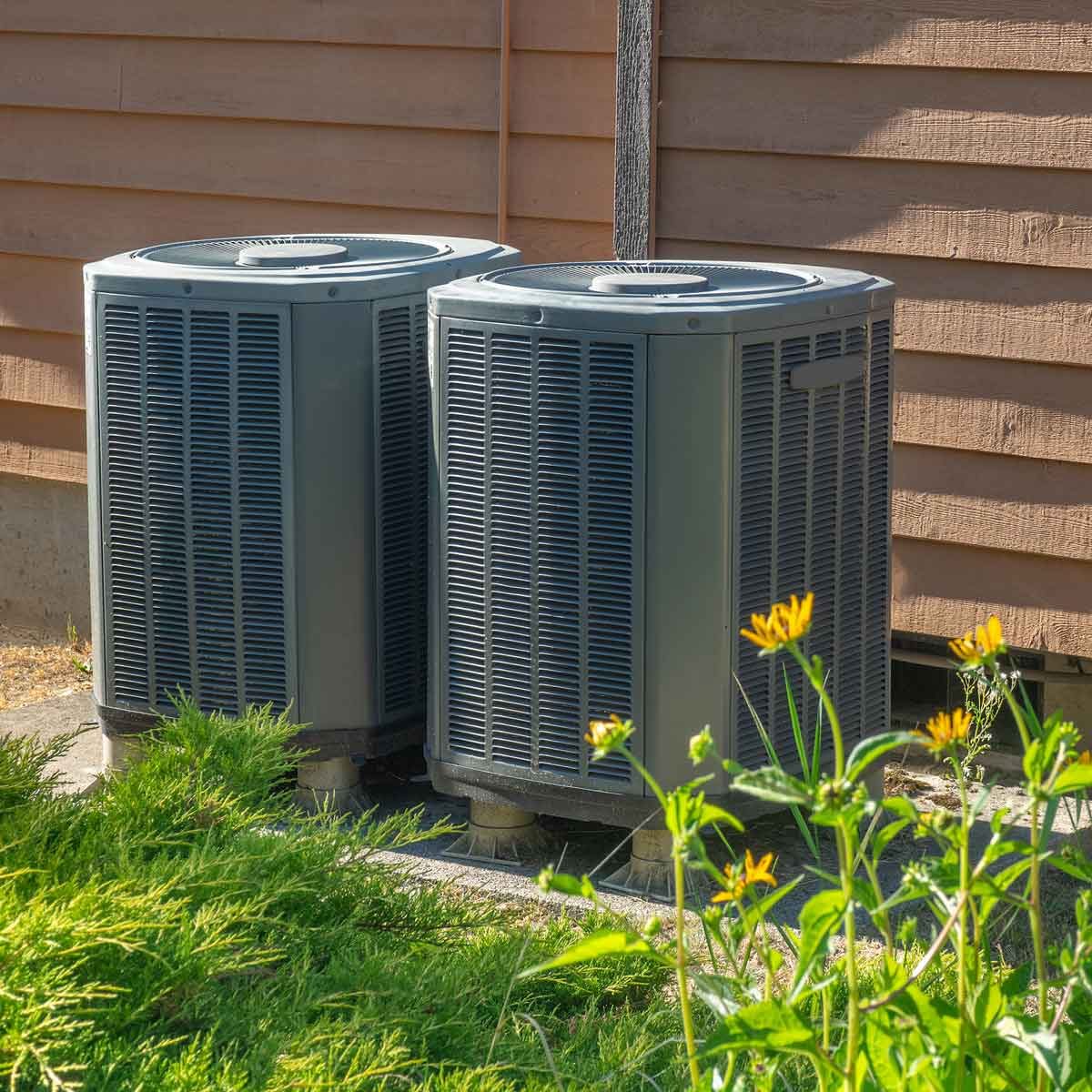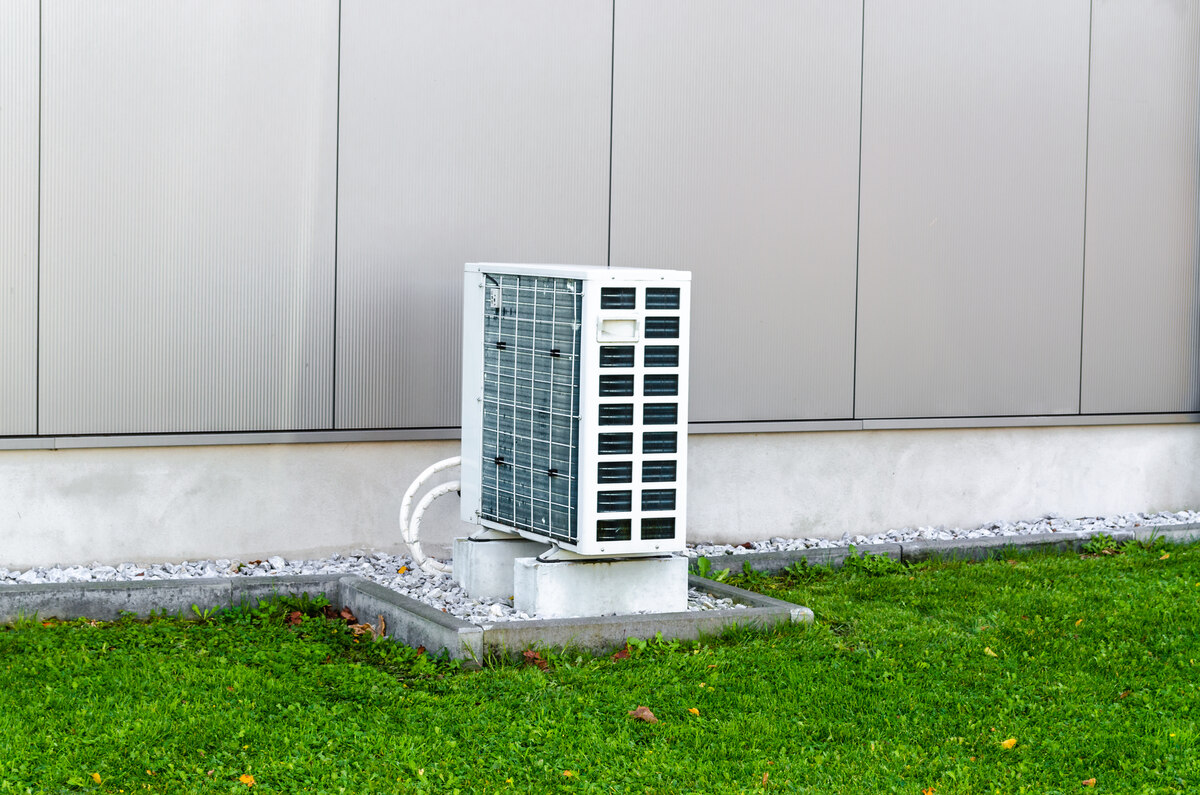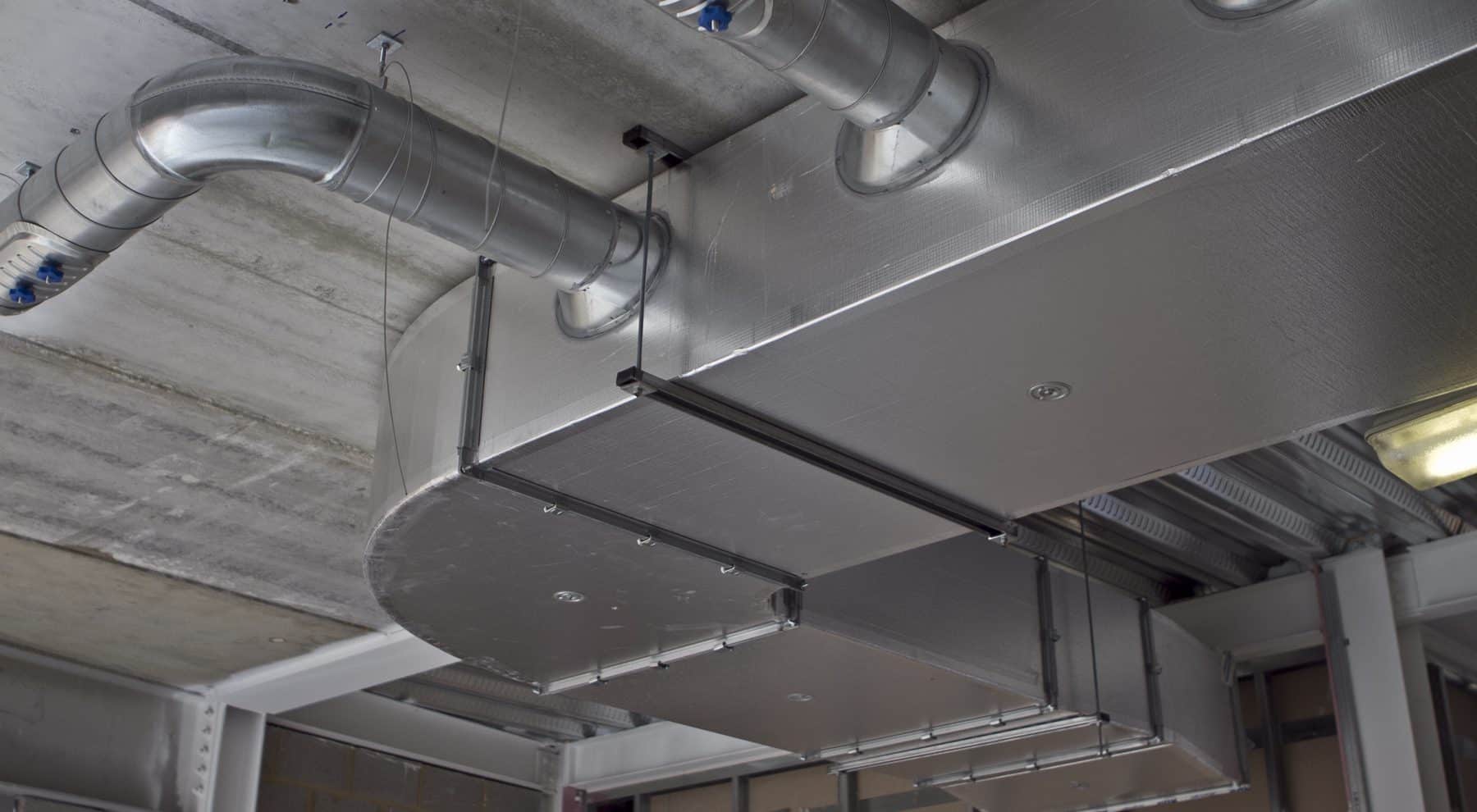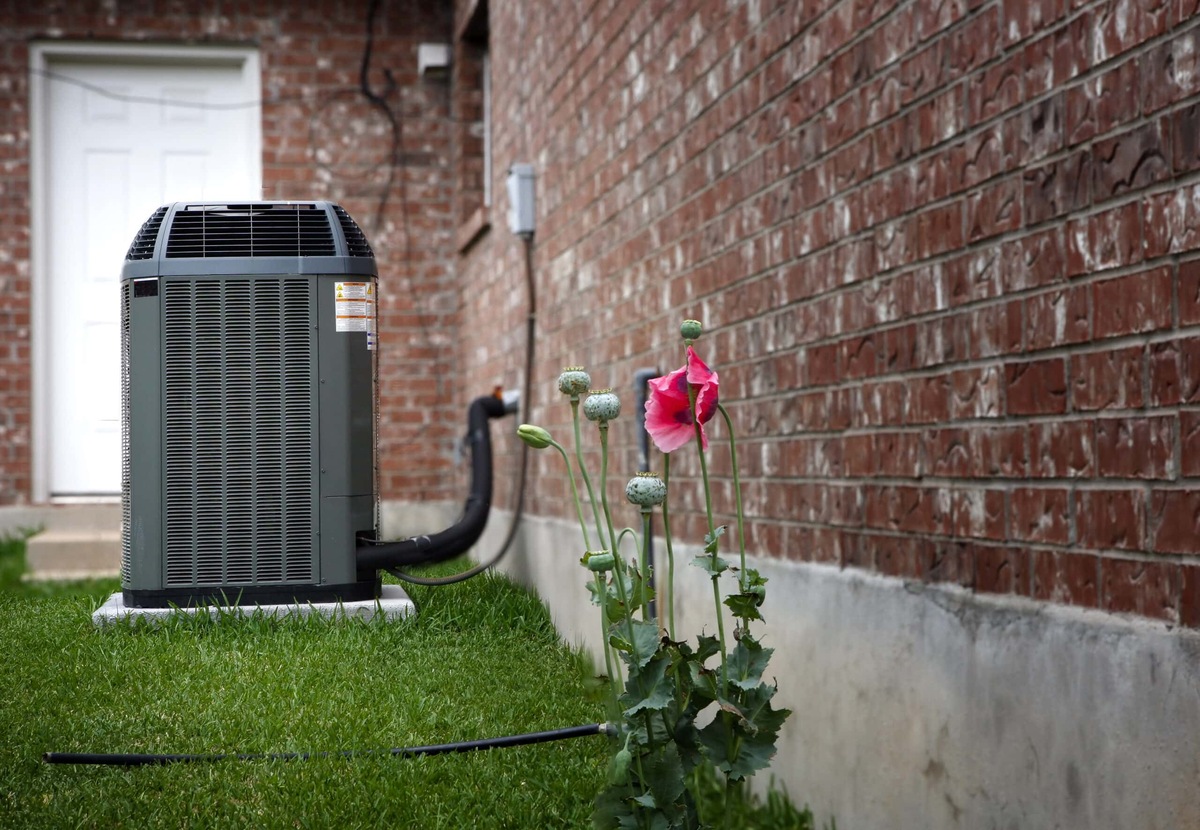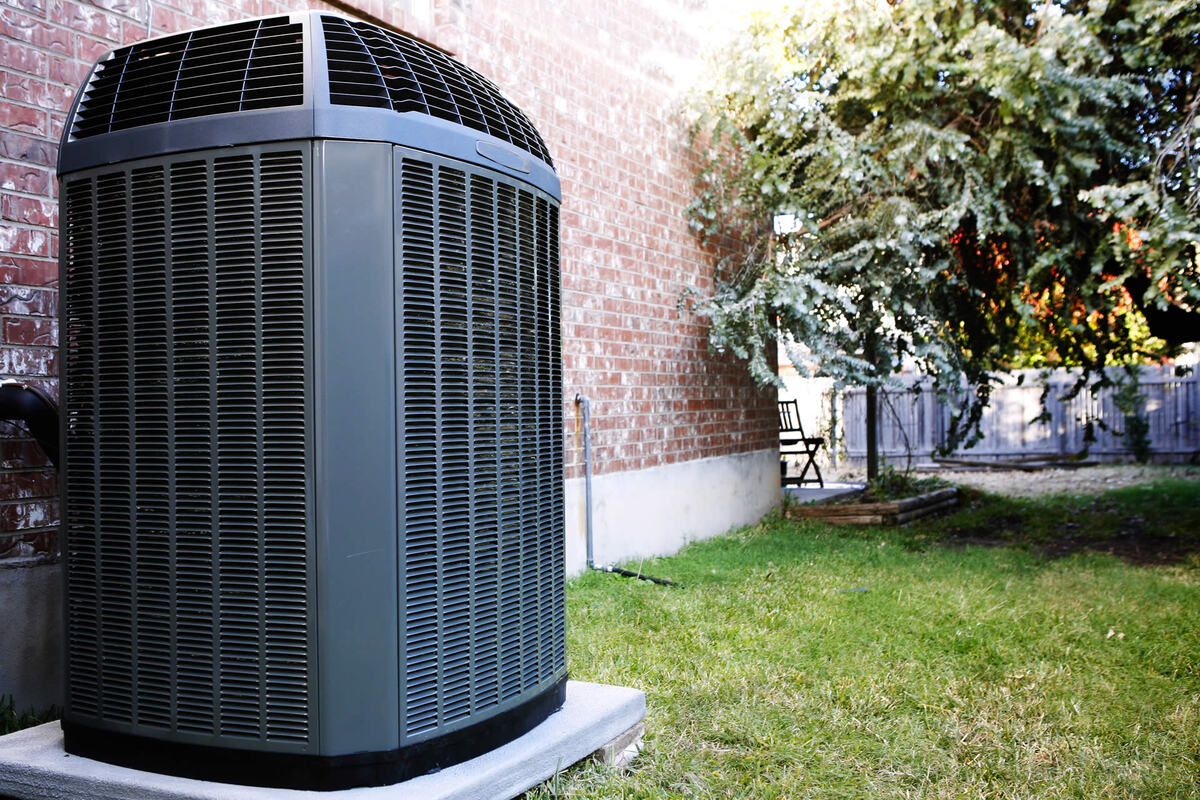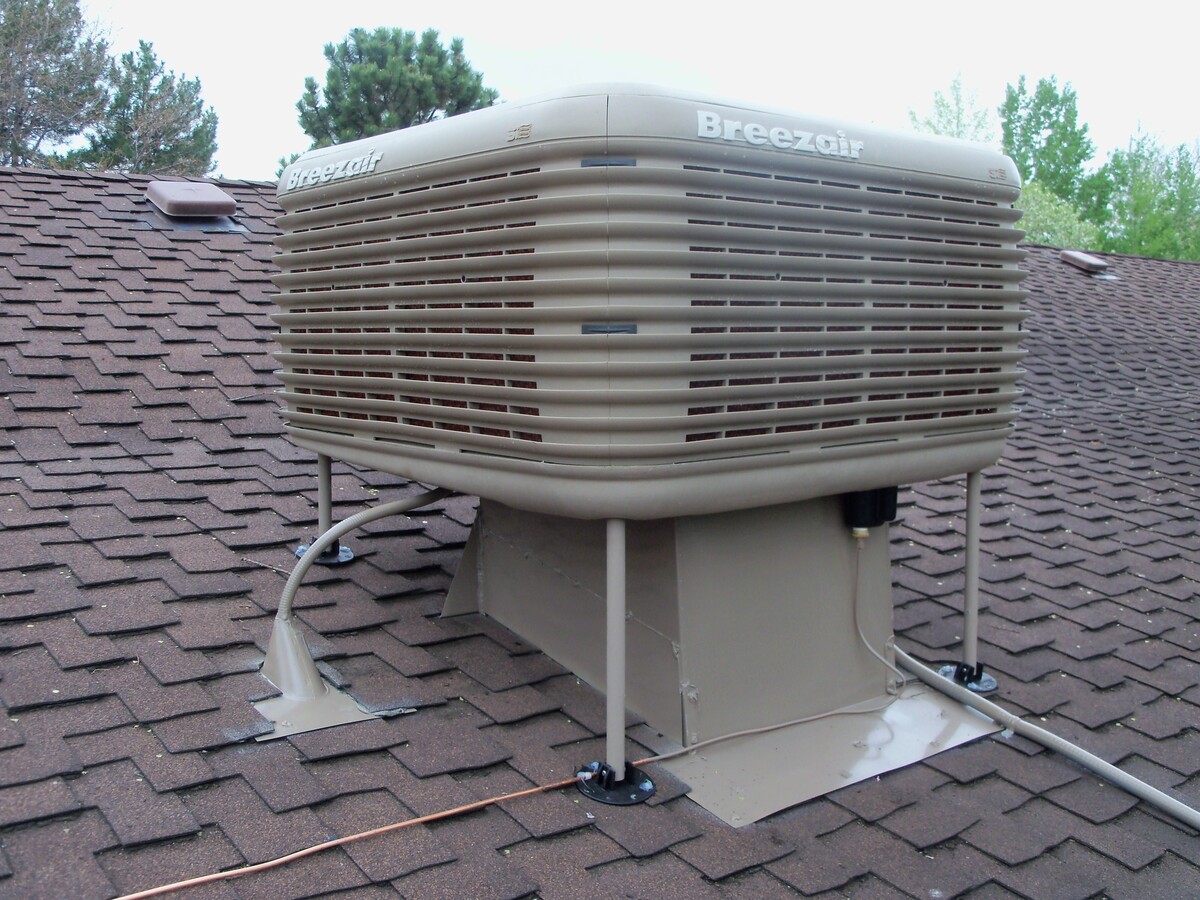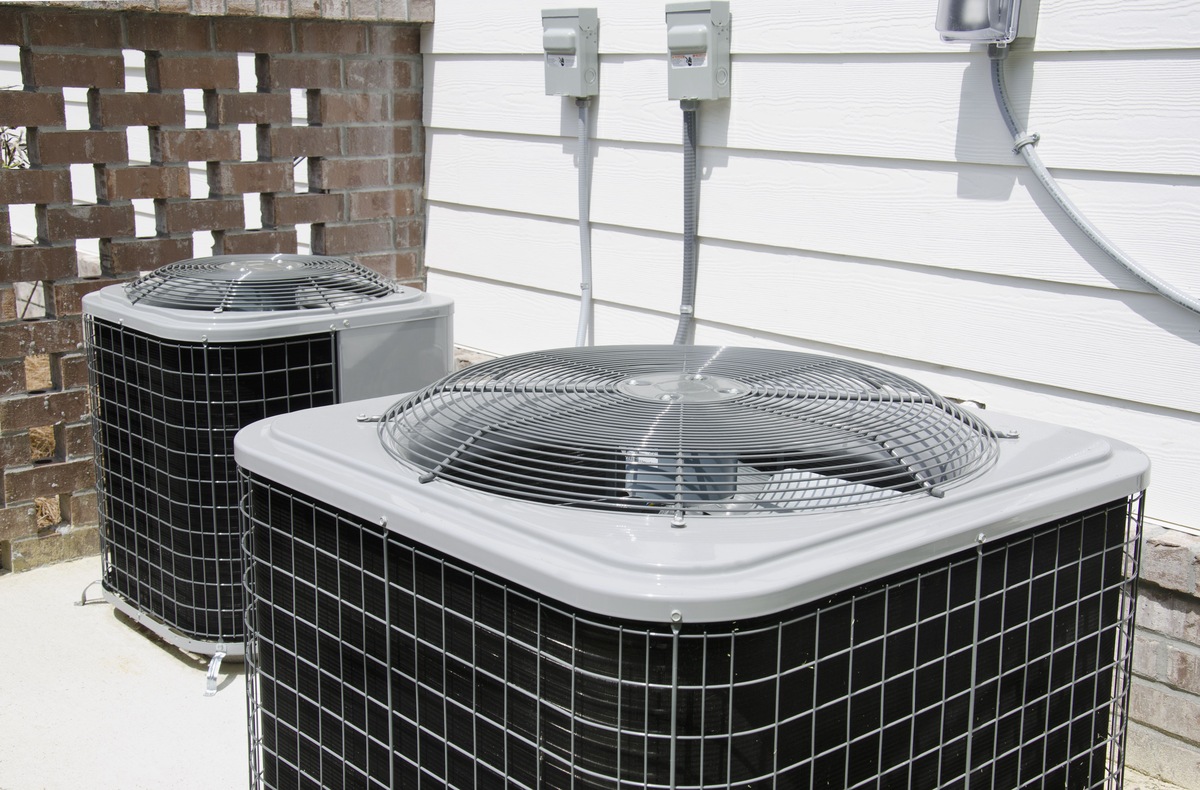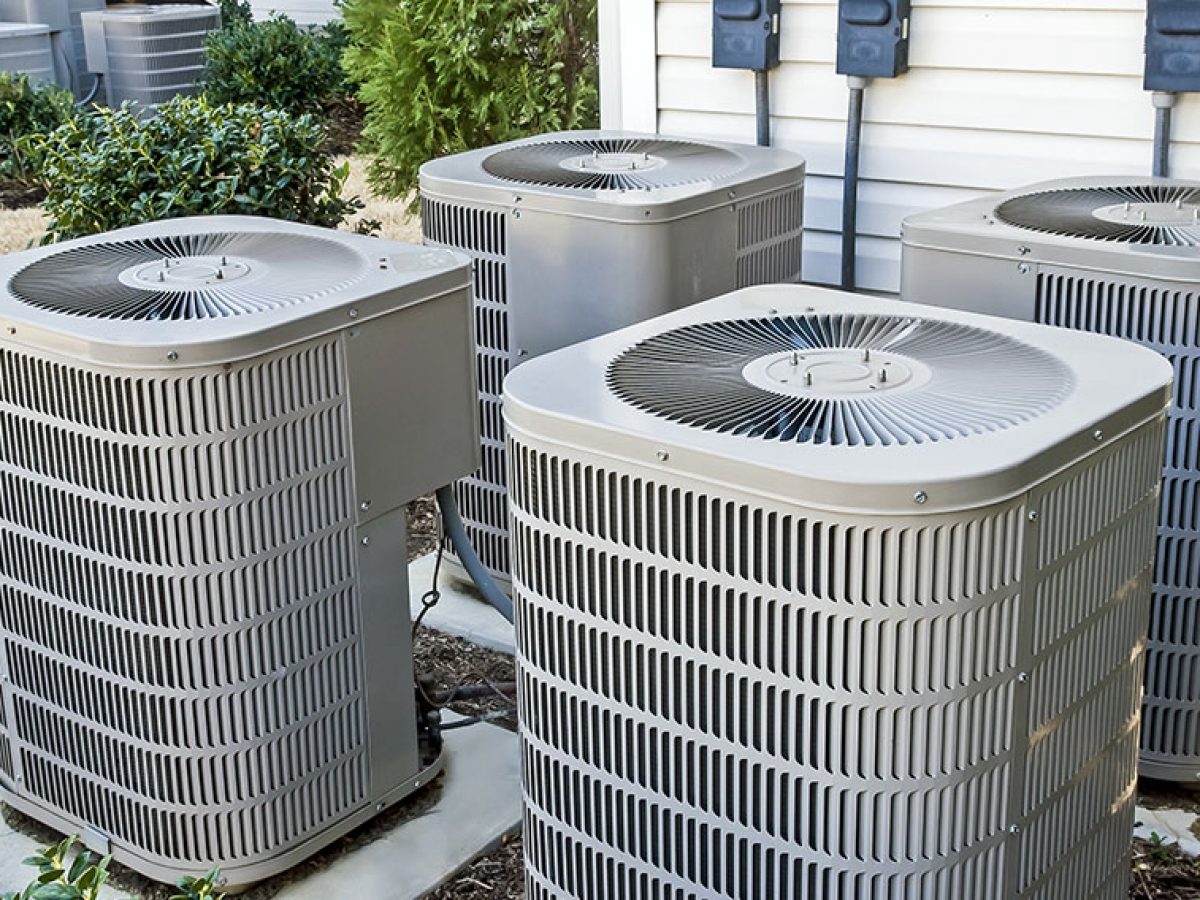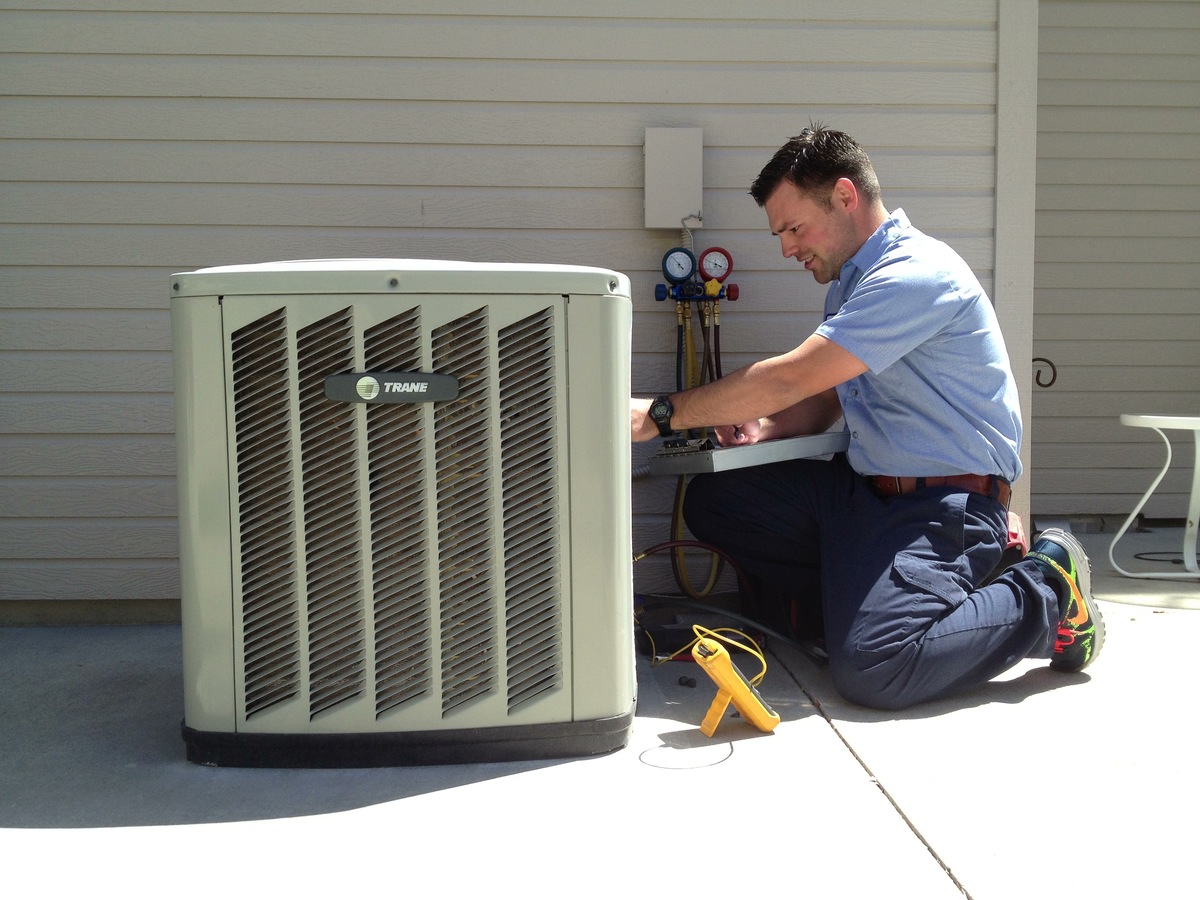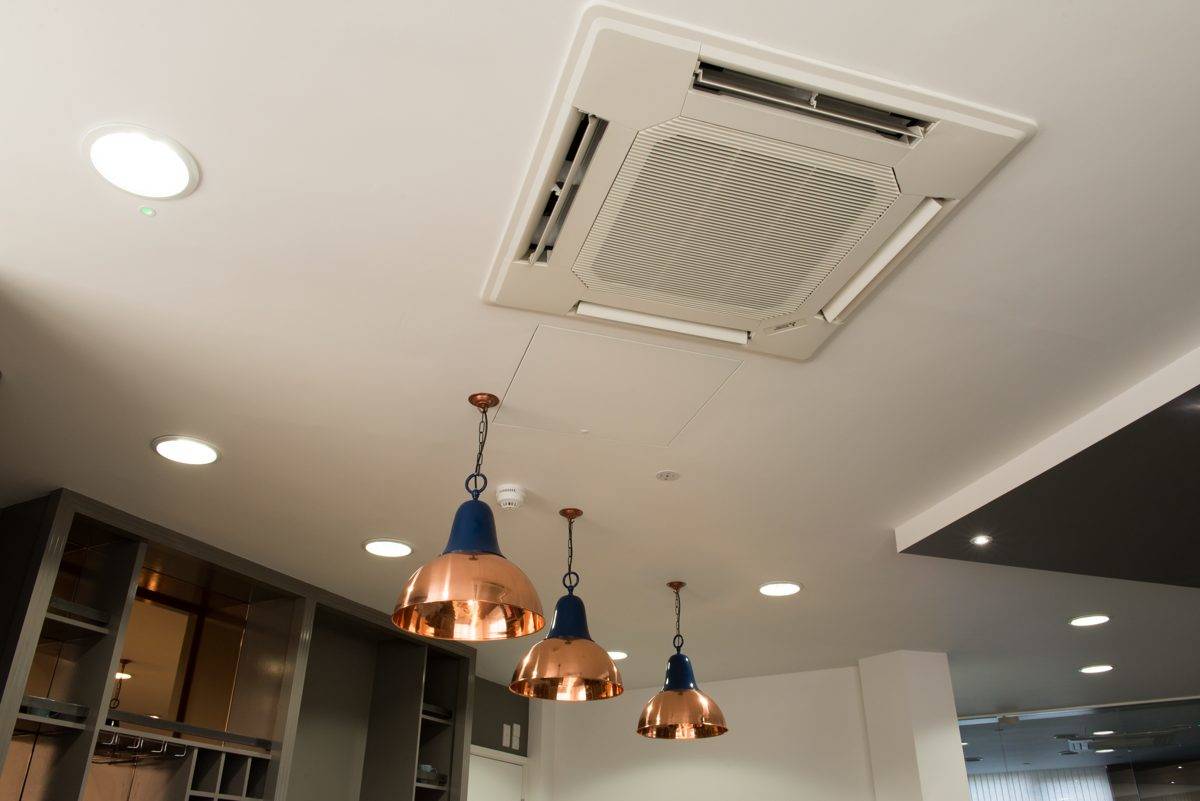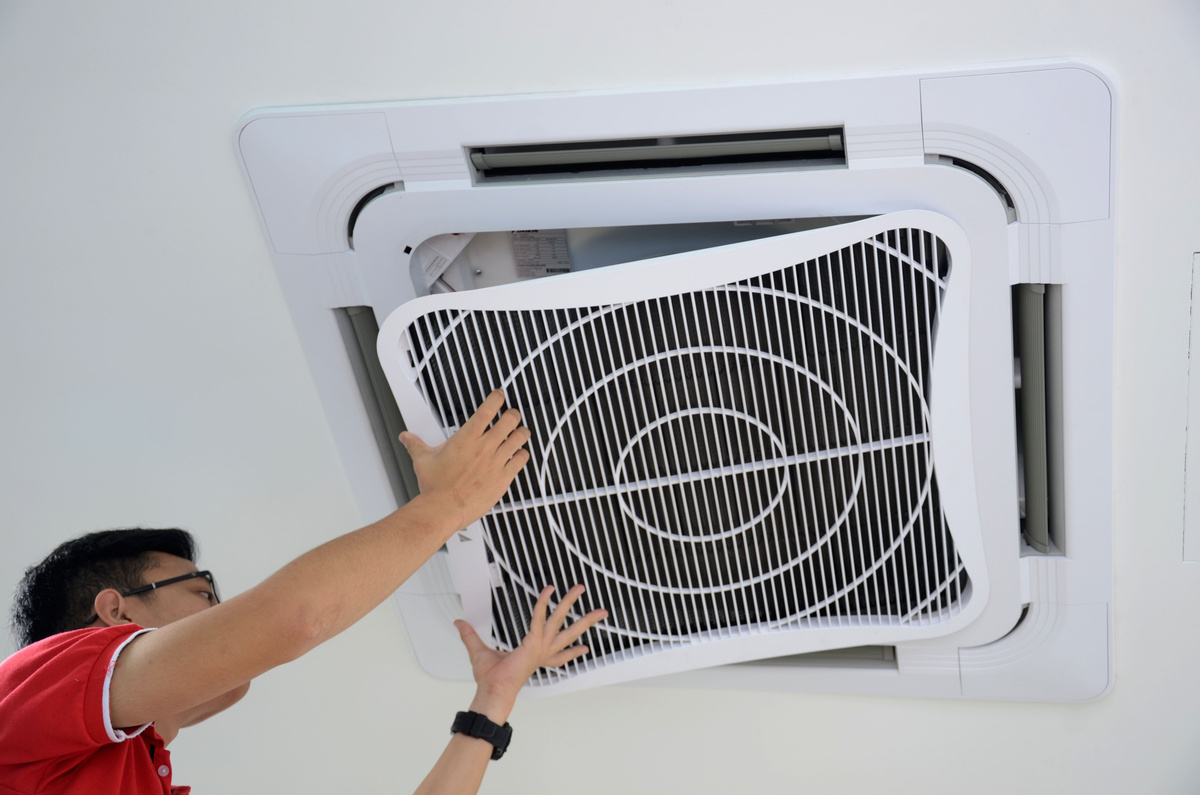Home>Home Maintenance>How Does Home Central Air Conditioning Work
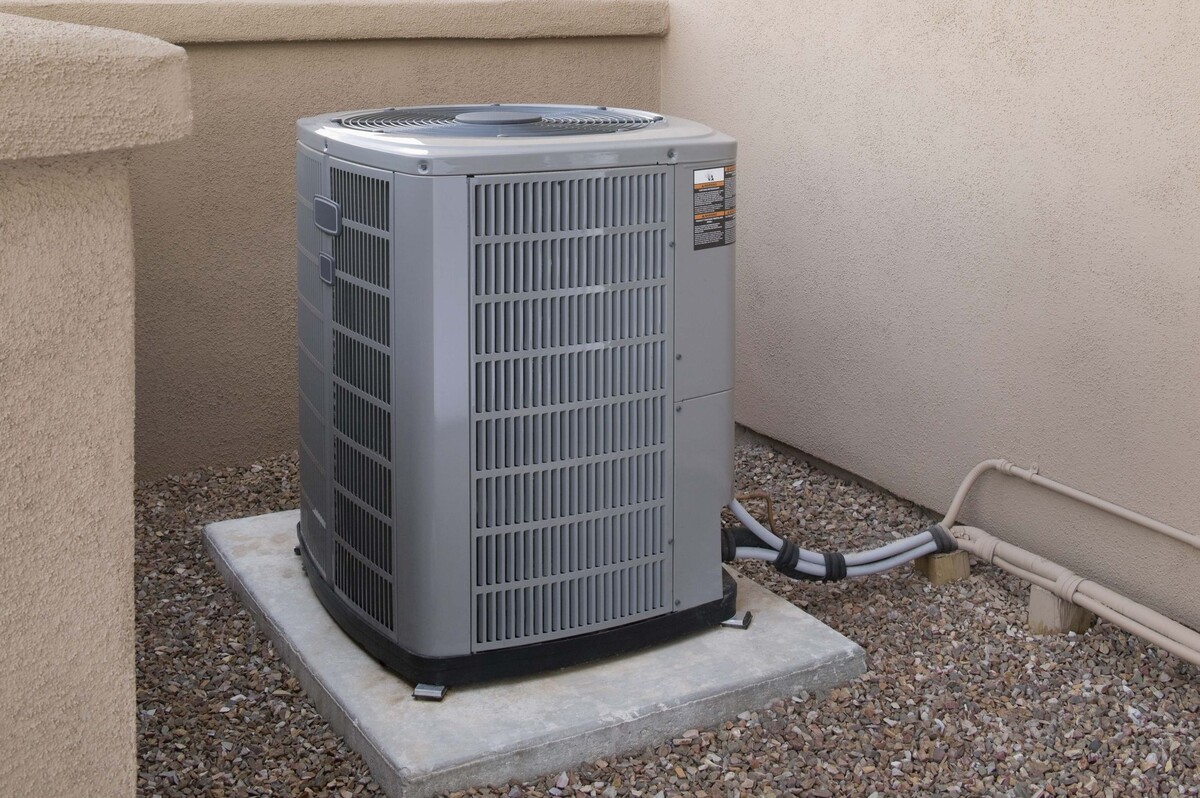

Home Maintenance
How Does Home Central Air Conditioning Work
Modified: August 28, 2024
Discover the inner workings of home central air conditioning systems and learn how proper home maintenance can keep your AC unit running efficiently.
(Many of the links in this article redirect to a specific reviewed product. Your purchase of these products through affiliate links helps to generate commission for Storables.com, at no extra cost. Learn more)
Introduction
Welcome to the world of home central air conditioning! As the temperatures rise during those sweltering summer months, it becomes increasingly important to have a reliable cooling system in place to keep your home comfortable. Central air conditioning not only helps regulate the temperature but also improves the indoor air quality.
In this article, we’ll dive deep into the world of home central air conditioning systems. We’ll explore the various components that make up these systems, how they work together to cool your home, and the importance of regular maintenance to keep your system running smoothly. So, let’s get started!
Key Takeaways:
- Keep your home central air conditioning system running smoothly by scheduling regular maintenance. This ensures energy efficiency, cost savings, and a comfortable living environment, especially during hot summer months.
- Understanding the components and functions of your central air conditioning system can help you make informed decisions about installation, maintenance, and energy efficiency. It’s a valuable investment in comfort and well-being for your home.
Read more: How Does A Central Air Conditioner Work?
Components of a Home Central Air Conditioning System
Before we delve into the details of how a home central air conditioning system works, let’s take a look at the key components that make up these systems.
1. Condenser Unit: This is the outdoor unit of the system, typically located on the side or back of the house. It houses the condenser coil, the compressor, and the fan. The condenser coil releases heat from the refrigerant, allowing it to cool down.
2. Evaporator Coil: The evaporator coil is located inside the air handler or furnace. It absorbs heat from the indoor air and cools it down using the refrigerant.
3. Compressor: The compressor is often referred to as the heart of the central air conditioning system. It is responsible for compressing the refrigerant and circulating it through the system.
4. Air Handler: The air handler is usually located inside the house, often in the attic or basement. It houses the evaporator coil and the blower fan. The blower fan circulates cooled air through the ductwork and into the rooms.
5. Ductwork: The ductwork is a network of channels that distributes cooled air throughout your home. It consists of supply ducts that carry cooled air to the rooms and return ducts that bring warm air back to the air handler to be cooled again.
6. Thermostat: The thermostat serves as the control center for your central air conditioning system. It allows you to set and regulate the desired temperature in your home.
7. Air Filters: Air filters play a crucial role in maintaining good indoor air quality. They trap dust, pollen, and other airborne particles, preventing them from circulating in your home and improving overall air quality.
These components work together to ensure that your central air conditioning system operates efficiently and effectively, keeping your home cool and comfortable even during the hottest days of summer.
The Role of the Thermostat
The thermostat is a small device with a big responsibility in your central air conditioning system. It is essentially the control center that allows you to set and regulate the desired temperature in your home. But its role goes beyond just adjusting the temperature. Let’s explore the functions and importance of the thermostat.
Temperature Control: The primary function of the thermostat is to control the temperature in your home. You can set the thermostat to your desired cooling temperature, and it will signal the air conditioning system to turn on or off based on the current indoor temperature.
Programmable Options: Many thermostats now come with programmable features, allowing you to set different temperature levels based on your schedule. This means you can program the thermostat to automatically adjust the temperature when you’re away from home or during sleeping hours, helping you save energy and reduce cooling costs.
Zoning Control: In larger homes or homes with multiple floors, zoning control allows you to divide your home into different zones and set different temperatures for each zone. This ensures that each area of your home is cooled to the desired level, increasing comfort and energy efficiency.
Smart Thermostats: With advancements in technology, smart thermostats have emerged as a popular choice for homeowners. These thermostats can connect to your home’s Wi-Fi network and be controlled remotely through a smartphone app or voice commands. They also learn your schedule and preferences, adapting the temperature settings accordingly for maximum comfort and efficiency.
By allowing you to set and control the temperature in your home, the thermostat plays a vital role in creating a comfortable living environment. It ensures that your air conditioning system operates at optimum levels, cooling your home when needed and helping you conserve energy when you’re not around.
Air Filtration and Purification
In addition to providing cool air, a central air conditioning system also plays an important role in improving the indoor air quality of your home. This is made possible through air filtration and purification mechanisms. Let’s explore how these components work and why they are essential.
Air Filters: One of the key components of a central air conditioning system is the air filter. Air filters are designed to trap dust, pollen, pet dander, and other airborne particles that can negatively impact indoor air quality. As the air circulates through the system, the filter captures these particles, preventing them from recirculating in your home.
Types of Air Filters: There are various types of air filters available, ranging from standard fiberglass filters to high-efficiency filters like HEPA (High-Efficiency Particulate Air) filters. HEPA filters are known for their exceptional ability to trap even the smallest particles, making them ideal for households with allergy or asthma sufferers.
Regular Maintenance: It’s important to regularly clean or replace your air filters as recommended by the manufacturer. Clogged or dirty air filters can restrict airflow, causing your system to work harder and less efficiently. In addition, dirty filters can release captured particles back into the air, compromising indoor air quality.
Air Purification Systems: In some cases, air filters alone may not be sufficient to address specific air quality concerns. That’s where air purification systems come in. These systems use advanced technologies such as UV germicidal lights, activated carbon filters, or electronic ionizers to further purify the air by neutralizing bacteria, viruses, and odor-causing particles.
Benefits of Air Filtration and Purification: The benefits of having effective air filtration and purification in your central air conditioning system are numerous. Firstly, it helps reduce allergens and irritants, making the air healthier and safer to breathe. It also helps prevent the buildup of dust and debris, keeping your HVAC system running efficiently for longer periods. Lastly, cleaner air contributes to a more comfortable and pleasant indoor environment for you and your family.
By incorporating air filtration and purification mechanisms into your central air conditioning system, you can ensure that the air you breathe indoors is fresh, clean, and free from harmful particles. It’s an investment in your health and well-being, as well as the longevity of your HVAC system.
Ductwork and Air Distribution
Ductwork plays a crucial role in a home central air conditioning system. It is responsible for distributing the cooled air from the air handler or furnace to different areas of your home. Let’s take a closer look at ductwork and how it ensures efficient air distribution throughout your living space.
Ductwork System: Ductwork is a network of channels made from metal, fiberglass, or flexible materials that carry conditioned air from the central unit to the individual rooms in your home. It consists of supply ducts and return ducts.
Supply Ducts: Supply ducts carry cooled air from the air handler or furnace to the various rooms of your home. These ducts are typically larger in size to accommodate the volume of airflow needed to cool each room effectively.
Return Ducts: Return ducts, on the other hand, are responsible for drawing warm air from the rooms back to the air handler or furnace to be cooled again. They ensure a continuous circulation of air throughout the system, improving energy efficiency and overall performance.
Duct Design and Efficiency: Proper duct design is crucial for efficient air distribution. The size, layout, and sealing of the ducts affect the airflow and temperature balance in your home. Improperly designed or leaky ducts can lead to uneven cooling, reduced system efficiency, and increased energy costs.
Duct Insulation: Insulating the ductwork is essential to prevent the loss of cool air as it travels through the ducts. Insulated ducts help maintain the desired temperature, reduce energy loss, and minimize condensation issues in humid climates.
Duct Maintenance: Regular maintenance of your ductwork is important to ensure optimal performance. Over time, dust, debris, and even mold can accumulate inside the ducts, affecting air quality and system efficiency. Professional duct cleaning can help remove these contaminants and improve indoor air quality.
Zoning and Dampers: In larger homes or homes with multiple floors, zoning systems and dampers can be installed within the ductwork. These allow for individual temperature control in different areas of the house, ensuring personalized comfort and energy efficiency.
Efficient ductwork and proper air distribution are essential for an effective central air conditioning system. Well-designed and maintained ducts help deliver cool air uniformly to all areas of your home, ensuring consistent comfort throughout.
Read more: How Does Marine Air Conditioning Work
Refrigeration Cycle: How Cooling Happens
Understanding the refrigeration cycle is key to understanding how a home central air conditioning system works to cool your living space. The refrigeration cycle is a continuous process that involves the transfer of heat from inside your home to the outdoors. Let’s take a closer look at each step of the refrigeration cycle.
1. Evaporator Coil: The process begins with the evaporator coil, located inside the air handler or furnace. The evaporator coil contains a chilled refrigerant, usually a specialized fluid called a hydrochlorofluorocarbon (HCFC) or hydrofluorocarbon (HFC). As warm air from your home passes over the coil, the refrigerant absorbs heat from the air, causing it to evaporate into a gas.
2. Compressor: Once evaporated, the refrigerant gas is then compressed by the compressor, which is usually located in the outdoor unit of the system. Compression causes the temperature and pressure of the refrigerant to increase significantly.
3. Condenser Coil: The high-pressure, high-temperature refrigerant gas is then sent to the condenser coil located in the outdoor unit of the system. As the refrigerant passes through the condenser coil, it releases heat to the surrounding outdoor air. This causes the refrigerant to condense back into a liquid state.
4. Expansion Valve: The liquid refrigerant then moves through the expansion valve, which regulates the flow of refrigerant into the evaporator coil. As the refrigerant passes through the expansion valve, it undergoes a sudden drop in pressure, causing it to cool down significantly.
5. Repeating the Cycle: With the refrigerant now in its cooled liquid form, it returns to the evaporator coil to start the cycle anew. The process continues as warm air from inside your home is blown over the evaporator coil, causing the refrigerant to absorb more heat and convert back into a gas. This cycle repeats itself to continuously cool your home.
The refrigeration cycle relies on the precise balance of pressure, temperature, and the phase change of the refrigerant to extract heat from your home and release it outdoors. By transferring heat from the inside to the outside, the system effectively cools the air in your home, providing a comfortable environment even during the hottest days.
Regular maintenance of your central air conditioning system, including cleaning or replacing filters, checking refrigerant levels, and inspecting ductwork, can help ensure efficient and reliable operation.
The Role of the Compressor
The compressor is often referred to as the heart of a home central air conditioning system. It plays a crucial role in the refrigeration cycle by compressing the refrigerant gas, increasing its temperature and pressure. Let’s explore the importance of the compressor in the cooling process.
Compression: The main function of the compressor is to compress the low-pressure refrigerant gas from the evaporator coil into a high-pressure gas. This compression raises the temperature and pressure of the refrigerant, preparing it for the next step in the refrigeration cycle.
Energy Transfer: As the compressor compresses the gas, it does work on the refrigerant, transferring energy to it. This increase in energy allows the refrigerant to release heat more efficiently when it reaches the condenser coil, where it will give up that heat to the outdoor environment.
Increasing Refrigerant Temperature: The compression process also increases the temperature of the refrigerant gas. This is important because the higher temperature enables the transfer of heat from the warm indoor air to the refrigerant later in the cycle, facilitating the cooling of the air in your home.
Efficiency and Performance: The efficiency and performance of a central air conditioning system rely heavily on a properly functioning compressor. An efficient compressor will compress the refrigerant gas to the desired pressure without unnecessary energy consumption. This ensures that the cooling process is effective and energy-efficient.
Types of Compressors: There are different types of compressors commonly used in home central air conditioning systems, including reciprocating compressors, rotary compressors, and scroll compressors. Each type has its own advantages in terms of efficiency, noise levels, and durability.
Maintenance and Care: Proper maintenance and care are essential to ensure that the compressor operates at its optimum level. Regular inspections, cleaning of condenser coils, and monitoring refrigerant levels can help prevent issues that could lead to compressor failure or reduced performance.
The role of the compressor in a central air conditioning system cannot be overstated. Without it, the refrigeration cycle would not be possible, and the cooling process would not occur. By efficiently compressing the refrigerant gas, the compressor sets the stage for effective heat exchange and provides you with the cool and comfortable environment you desire.
Evaporator Coil and Condenser Coil
The evaporator coil and condenser coil are two critical components of a home central air conditioning system. These coils work together to facilitate the transfer of heat from inside your home to the outside, enabling the cooling process. Let’s delve into the functions and importance of both the evaporator coil and condenser coil.
Evaporator Coil: The evaporator coil is located inside the air handler or furnace, typically in the indoor unit of the system. It acts as the heat exchanger responsible for absorbing heat from the warm indoor air.
When the air conditioning system is operational, the evaporator coil contains a chilled refrigerant—usually a hydrochlorofluorocarbon (HCFC) or hydrofluorocarbon (HFC). As warm air from your home passes over the evaporator coil, the refrigerant absorbs the heat from the air, causing it to evaporate into a gas state.
The evaporation process extracts heat from the air, resulting in a cool and dehumidified airflow. The cooled air is then circulated back into your home through air ducts while the refrigerant gas continues the refrigeration cycle.
Condenser Coil: Unlike the evaporator coil, the condenser coil is located in the outdoor unit of the central air conditioning system. It plays a vital role in releasing the heat absorbed by the evaporator coil to the outdoor environment.
After absorbing heat from the indoor air, the refrigerant gas travels to the condenser coil. In the condenser coil, the high-pressure refrigerant gas is cooled and condensed back into a liquid state by releasing heat to the outdoor air.
The condenser coil facilitates the final step of the refrigeration cycle by allowing the refrigerant to release the heat it gained from inside your home. This cools the refrigerant, preparing it to repeat the cycle as it returns to the evaporator coil.
Both the evaporator coil and condenser coil are essential for the proper functioning of a central air conditioning system. The evaporator coil removes heat from the indoor air, while the condenser coil releases that heat to the outdoor environment. This continuous cycle of heat transfer helps maintain a comfortable and cool indoor temperature.
Regular maintenance, including cleaning the coils and ensuring proper airflow, is important for both coils. Keeping the coils clean and free from debris helps maintain their efficiency and ensures optimal cooling performance for your central air conditioning system.
The Function of the Expansion Valve
The expansion valve is a crucial component in a home central air conditioning system. It serves a vital function in regulating the flow of refrigerant throughout the system, ensuring optimal cooling performance. Let’s explore the role and importance of the expansion valve in the cooling process.
Refrigerant Flow Control: The primary function of the expansion valve is to regulate the flow of refrigerant between the evaporator coil and the condenser coil. It controls the amount of refrigerant that enters the evaporator coil, allowing for precise temperature and pressure control during the cooling process.
Pressure Reduction: As the refrigerant exits the condenser coil as a high-pressure, high-temperature gas, it needs to undergo a pressure reduction before reaching the evaporator coil. The expansion valve creates a pressure drop by restricting the flow of refrigerant, allowing it to expand and cool down.
Phase Change: The expansion valve is crucial for facilitating the phase change of the refrigerant. As the high-pressure liquid refrigerant enters the expansion valve, it experiences a sudden drop in pressure. This pressure drop causes the refrigerant to transition from a liquid to a low-pressure, low-temperature mixture of liquid and vapor known as a “flash gas.”
Evaporator Cooling: The expansion valve plays a significant role in the evaporator coil’s cooling process. As the low-pressure flash gas enters the evaporator coil, it absorbs heat from the warm indoor air passing over the coil. This absorption of heat causes the refrigerant to fully vaporize, transforming into a low-pressure gas.
Ensuring Efficiency: The expansion valve is critical for maintaining efficient cooling operation. By precisely controlling the flow of refrigerant, the expansion valve ensures that the refrigerant enters the evaporator coil at the optimal rate. This allows for effective heat absorption and temperature reduction, enhancing overall cooling efficiency.
Superheat Control: The expansion valve also helps regulate superheat in the system. Superheat refers to the temperature increase of the refrigerant vapor above its boiling point. By carefully adjusting the expansion valve, the right amount of superheat can be maintained, ensuring that the refrigerant fully evaporates in the evaporator coil.
The function of the expansion valve is crucial in maintaining proper refrigerant flow, pressure control, and phase change in a home central air conditioning system. Without the expansion valve, the refrigeration cycle would not be able to effectively cool your home. Regular maintenance and professional inspection of the expansion valve are important to ensure its proper functioning and overall system efficiency.
Read more: How Does Central AC Work
The Importance of Proper Maintenance
Maintenance is an essential aspect of keeping your home central air conditioning system running smoothly and efficiently. Regular maintenance not only extends the lifespan of your system but also ensures optimal performance and helps prevent costly repairs. Let’s explore the importance of proper maintenance for your air conditioning system.
1. Energy Efficiency: Proper maintenance helps your system operate at peak efficiency, ensuring that it uses energy efficiently to cool your home. A well-maintained air conditioning system does not have to work harder than necessary, leading to reduced energy consumption and lower utility bills.
2. Performance and Comfort: Regular maintenance ensures that your air conditioning system is working effectively to provide the desired indoor comfort. When components are clean, adjusted, and well-maintained, you can expect consistent and reliable cooling performance throughout your home.
3. Prevention of Costly Repairs: Maintenance allows for the early detection of potential issues and proactive measures to prevent major breakdowns. By addressing minor problems before they escalate, you can avoid costly repairs and inconvenience during extreme weather conditions when you need your air conditioning system the most.
4. Longer Lifespan: Proper maintenance extends the lifespan of your air conditioning system. Regular cleaning, lubrication, and inspection of components help reduce wear and tear and ensure that your system operates optimally for a longer period. This reduces the need for premature replacement and the associated costs.
5. Improved Air Quality: Maintenance, including cleaning or changing air filters, helps maintain good indoor air quality. Clean filters capture dust, pollen, and other allergens, preventing them from circulating in your home. This is especially beneficial for individuals with allergies or respiratory conditions.
6. Warranty Requirements: Many manufacturers require regular maintenance to uphold the warranty coverage for your air conditioning system. Neglecting maintenance could void the warranty, leaving you responsible for the full cost of repairs or replacements.
7. Peace of Mind: Regular maintenance provides peace of mind, knowing that your air conditioning system is in good working order. It reduces the risk of unexpected breakdowns, allows for early detection of potential issues, and ensures that your system is ready to keep you cool during the hottest months.
By investing in proper maintenance for your central air conditioning system, you can enjoy improved energy efficiency, comfort, air quality, and a longer lifespan for your system. Consider scheduling regular maintenance appointments or joining a maintenance program offered by HVAC professionals to keep your air conditioning system in top shape.
Energy Efficiency and Cost Considerations
When it comes to your home central air conditioning system, energy efficiency plays a crucial role not only in reducing your carbon footprint but also in saving you money on energy bills. Additionally, considering the long-term costs associated with operating and maintaining your system is essential. Let’s explore the importance of energy efficiency and cost considerations when it comes to your central air conditioning system.
1. Energy Efficiency Ratings: When purchasing a new air conditioning system or upgrading an existing one, pay attention to the energy efficiency ratings. Look for systems with a high Seasonal Energy Efficiency Ratio (SEER) rating. A higher SEER rating means better energy efficiency and lower energy consumption.
2. Lower Energy Bills: An energy-efficient air conditioning system can significantly reduce your monthly energy bills. By using less energy to cool your home, you can enjoy long-term savings on your utility costs. This is especially important during hot summer months when air conditioning usage is at its highest.
3. Long-Term Cost Savings: While energy-efficient systems may have a higher upfront cost, they can result in considerable long-term cost savings. Lower energy consumption translates into reduced operating costs over the lifespan of the system, offsetting the initial investment in the more efficient equipment.
4. Proper Sizing: Properly sizing your air conditioning system is crucial for energy efficiency and cost considerations. An oversized system will waste energy by cycling on and off frequently, while an undersized system may struggle to cool your home efficiently. Consulting with a professional can help determine the right size for your specific needs.
5. Programmable Thermostats: Installing a programmable thermostat enables you to set temperature schedules based on your daily routine. This helps optimize energy usage by adjusting the temperature when you’re away or asleep, resulting in energy savings without sacrificing comfort.
6. Regular Maintenance: Regular maintenance is key to maintaining energy efficiency. Dirty filters, lack of lubrication, and other neglected maintenance tasks can cause your system to work harder and consume more energy. By keeping up with regular maintenance, you can ensure that your system operates at peak efficiency.
7. Rebates and Incentives: Many utility companies and government agencies offer rebates and incentives for installing energy-efficient air conditioning systems. These incentives can help offset the initial cost and provide additional savings over time.
Considering energy efficiency and cost considerations when it comes to your central air conditioning system can lead to significant savings and a lower environmental impact. By choosing an energy-efficient system, maintaining it properly, and taking advantage of available incentives, you can enjoy a comfortable home while keeping your energy bills and environmental footprint in check.
Conclusion
A home central air conditioning system is not just a luxury; it is a vital component of maintaining a comfortable living environment, especially during the hot summer months. Understanding the various components and how they work together can help you make informed decisions about installation, maintenance, and energy efficiency.
We explored the key components of a central air conditioning system, including the condenser unit, evaporator coil, compressor, air handler, ductwork, and thermostat. Each of these components has a specific role in the cooling process, ensuring effective and efficient temperature regulation throughout your home.
We discussed the importance of air filtration and purification for improving indoor air quality, as well as the crucial role of the expansion valve in regulating refrigerant flow and phase change. We also highlighted the significance of proper maintenance in optimizing system performance, energy efficiency, and extending the lifespan of your air conditioning system.
Energy efficiency and cost considerations were emphasized as important factors to keep in mind. An energy-efficient system can result in long-term cost savings by reducing energy consumption and lowering utility bills. Taking steps such as using programmable thermostats, properly sizing your system, and regularly maintaining your equipment can further enhance efficiency and reduce overall costs.
In conclusion, a home central air conditioning system is a valuable investment in comfort and well-being. Understanding its components, functions, and the importance of maintenance and energy efficiency can help you make the most of your system and enjoy a cool and comfortable home environment for years to come.
Remember to consult with HVAC professionals for installation, maintenance, and any concerns you may have. With proper care and attention, your central air conditioning system will continue to provide reliable cooling, improved indoor air quality, and optimal energy efficiency for your home.
Frequently Asked Questions about How Does Home Central Air Conditioning Work
Was this page helpful?
At Storables.com, we guarantee accurate and reliable information. Our content, validated by Expert Board Contributors, is crafted following stringent Editorial Policies. We're committed to providing you with well-researched, expert-backed insights for all your informational needs.
